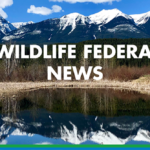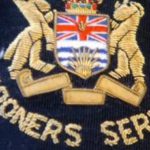Camera on osprey nest shows three chicks in live web feed
Photo by Michael Farnsworth: camera mounted on osprey nest shows live-streaming images of the hatching, feeding and daily life of a pair of osprey and their eggs
Visit www.fwcp.ca this summer for a rare opportunity to see into the daily life of an osprey family. The Fish and Wildlife Compensation Program (FWCP), run by BC Hydro, the Ministry of Environment (MOE) and Fisheries & Oceans Canada, worked with the Creston Valley Wildlife Management Area (CVWMA) to install a webcam on an osprey nest in the Creston Valley.
The osprey nest cam will show live-streaming images of the hatching, feeding and daily life of a pair of osprey and their eggs.
“We’re pretty excited about this for sure,” says FWCP wildlife biologist Irene Manley from BC Hydro. “Two chicks hatched on June 15 and a third the following day.”
The camera was installed in early April this year prior to the ospreys’ return. Several changes have been made since the last year of live-streaming in 2007: a new camera to improve the image quality and a new design to allow the camera to be swung down on an arm to enable easier cleaning.
“Being so close to the nest means the camera lens can come under direct fire, mostly from flying remnants of fish!” added Manley.
And if you can’t view the live stream on a computer, then visit the Creston Wildlife Centre at the CVWMA to view the live images.
“This is a great opportunity to really get a glimpse of what family life is like inside an osprey nest – and 2007 showed us that it is a pretty raucous affair, especially when live fish are being delivered,” said BC Hydro’s Kevin Conlin, co-chair of the FWCP Steering Committee. “Typically the juveniles will remain in their nest all summer so there is lots of time to watch them develop.”
The osprey population has bounced back in recent decades and, since its diet consists nearly entirely of live fish, has benefitted from the nutrient additions in Kootenay Lake. These additions are coordinated by the FWCP and MOE, with support from BC Hydro, Kootenai Tribe of Idaho, Bonneville Power Administration, Kootenai Tribe of Idaho, Bonneville Power Administration and the Northwest Power and Conservation Council’s Columbia Basin Fish and Wildlife Program.
The FWCP conserves and enhances fish and wildlife populations affected by the construction of BC Hydro dams, and is a partnership between BC Hydro, MOE and Fisheries & Oceans Canada. BC Hydro is also the primary financial supporter of the CVWMA.
Osprey Facts
- Ospreys (Pandion haliaetus) return to the same nest, made of sticks, often located on man-made elevated structures such as power poles, buoys and bridges, as well as cliffs and snags;
- The female lays between two and four eggs one to five days apart. The eggs are incubated for 35 to 40 days;
- The diet of an osprey consists nearly entirely of live fish; The Nutrient Restoration Program in Kootenay Lake has helped boost kokanee numbers, therefore, playing an important role in supporting the osprey population;
- Ospreys can become completely submerged when diving for fish and still take off with their prey, unlike bald eagles which pluck the fish from the surface;
- There have been reports of ospreys drowning after locking their talons into a fish that is too big and strong to bring to the surface;
- Ospreys were once threatened around the world primarily due to the use of DDT and other pesticides, but their numbers have rebounded in recent decades;
- They are the most widely distributed bird of prey, found on all continents except Antarctica;
- Ospreys in the Columbia Basin usually migrate in winter to the southern United States or Mexico;
- Ospreys are unique in that they have an opposable toe that can face forward or backward. When sitting on a branch it usually has three toes on the front and one on the back. When holding a fish it usually has two toes on each side of the fish. When flying with its prey the osprey invariably flies with the fish head first to reduce wind resistance.

























Comments